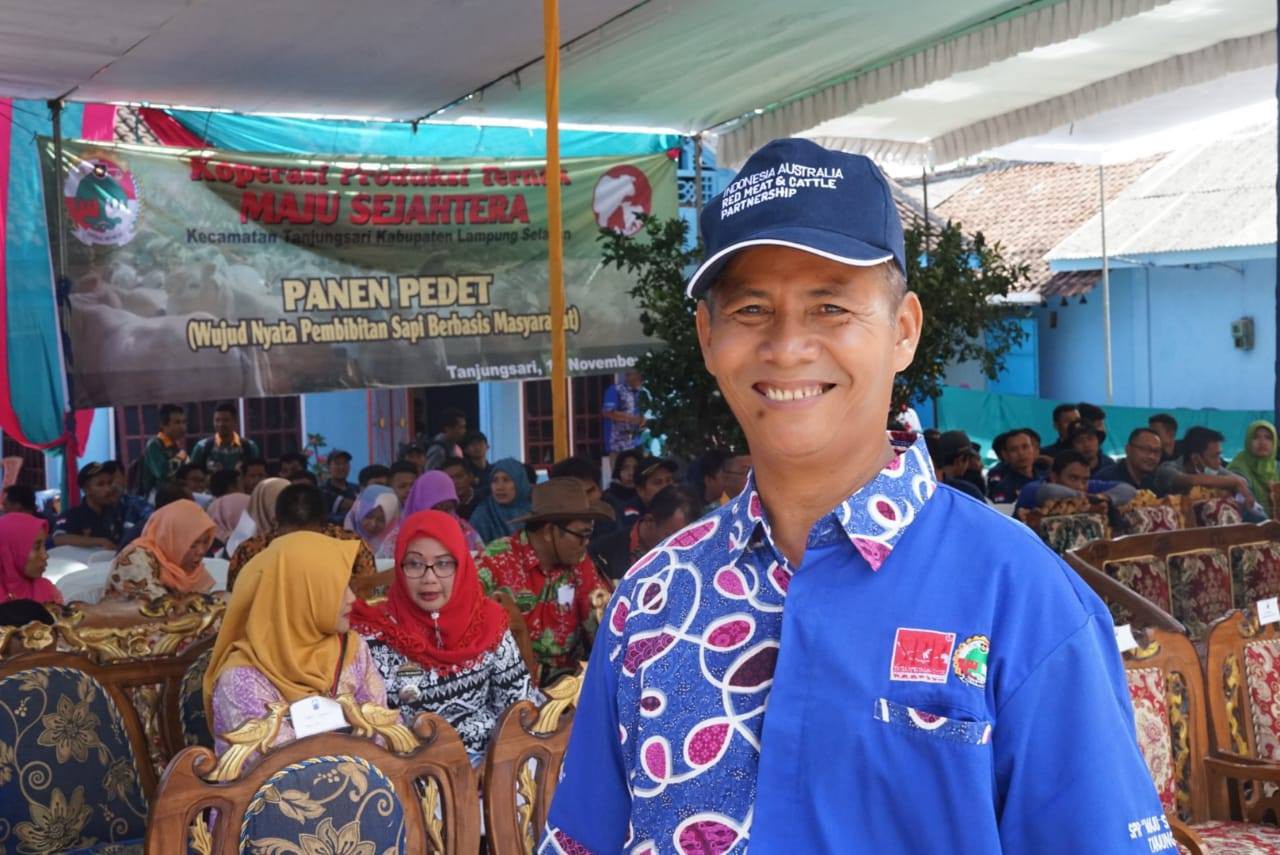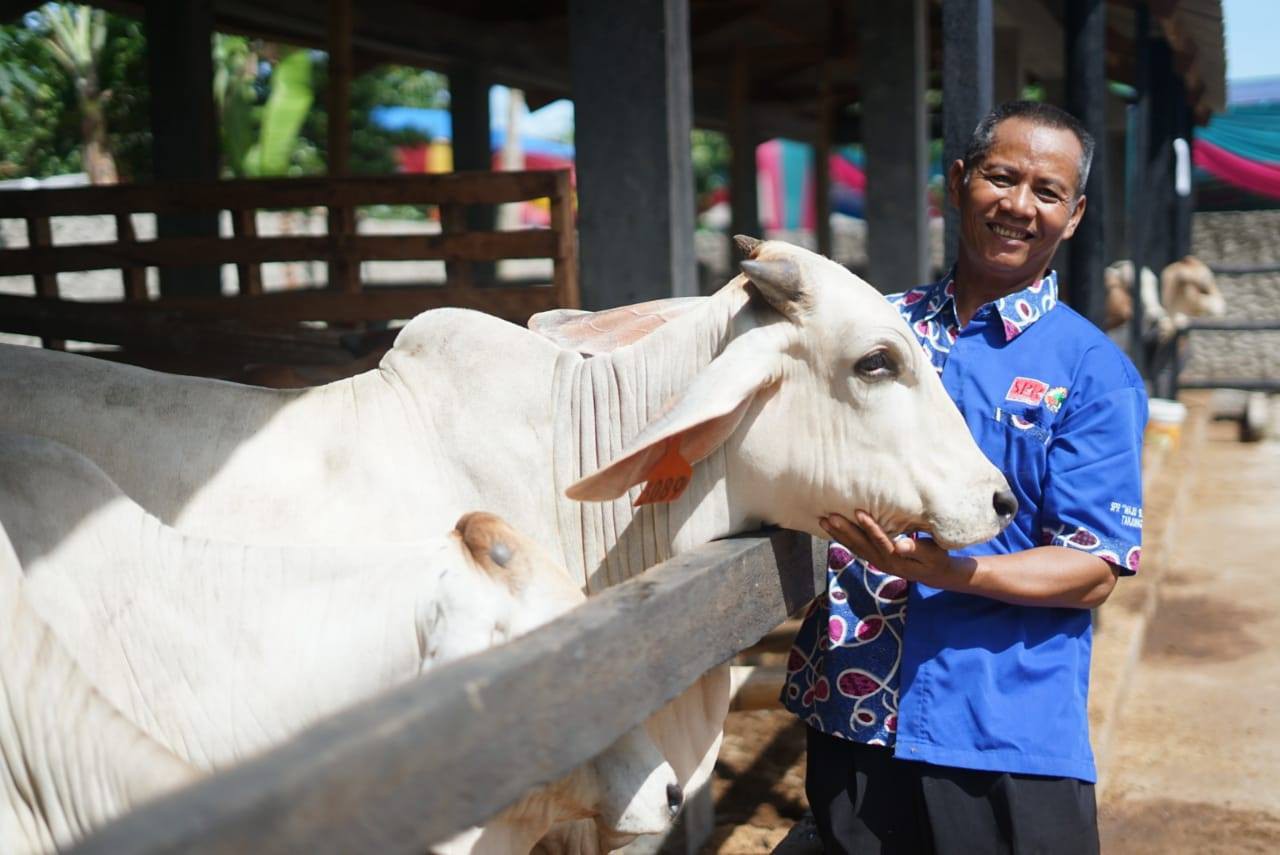A New View of Brahman Cross
A cattle-farming cooperative in Indonesia is working to change community perceptions on breeding Brahman Cross cattle.
Mr Supardi is a member of the Cattle Production Cooperative Maju Sejahtera (KPT MS) in Lampung, Indonesia.
Mr Supardi has experienced the highs and lows of being a cattle farmer for the past six years and believes the red meat and cattle industry is the most promising business in Tanjung Sari, where he lives.
Supardi started breeding Brahman Cross cows from Australia some time ago and, on 24 April 2017, KPT MS signed a contract with the Partnership’s Indonesia Australia Commercial Cattle Breeding (IACCB) Program. The IACCB helps to build the capacity of farmer cooperatives which collectively own and manage their cattle and facilities.
Using the program’s intensive cut-and-carry model, Supardi and 80 other members in the cooperative started to manage 100 pregnant heifers and five bulls from Australia.
Although Brahman Cross cows have been bred on small-scale cattle farms in Lampung for some time, there remained a stigma associated with farming Brahman Cross cattle.
With a perception that the breed experiences high rates of uterine prolapse during pregnancy, many believed it almost impossible for Brahman Cross cows to have a subsequent pregnancy after the birth of the first calf.
“People usually said: ‘Well, I’m sure you will sell those cows next year’ or ‘Why are you spending so much to buy cattle feed? You waste so much energy raising cows with a lot of problems’,” Supardi reflects.
Some in the community also suggested that the cattle would never produce second calves because it is too difficult to tell when Brahman Cross cows were ready to mate again.
Mr Supardi admits that, in the beginning, these views and comments put a damper on the spirits of those in his cooperative.
EXPERTISE HELPS TURN ATTITUDES AROUND
Through technical assistance from the IACCB team, the KPT MS farmers learnt the importance of nutrition and feeding patterns. Moreover, they learnt when to wean the calves (at about three months) to allow the cows to return to good condition and back to pregnancy.
A total of 97 of the 100 heifers gave birth to healthy calves and several have gone through second pregnancies. This positive outcome has provided the reassurance and incentive for the cattle farmers to become more motivated. They now believe that if they raise their cattle using proper management techniques, they will be rewarded with good results.
“Now I have a lot of confidence,”
Mr Supardi says, elated by the health and productivity of his cows. “Other farmers, too. And people have started to see the results.”
At the moment, the cattle farmers have 11 hectares of pasture and they routinely plant grass for feed.
Mr Supardi plans to expand the pasture to 20 hectares to accommodate the cooperative’s increased cow population.
The members of the cooperative, realise that there is still a lot of work to be done to make Brahman Cross cattle breeding in Lampung more commercially viable. With IACCB assistance, they are devising a strategy to lower the cost of feeding, while maintaining the cows’ health and nutrition, and to care for new heifers and calves.
“I hope IACCB will continue giving their support and assistance to us,” Supardi said.
“I think we’ve started to change the community’s mindset because now some of them want to help us in planting more grass for the cows.”












